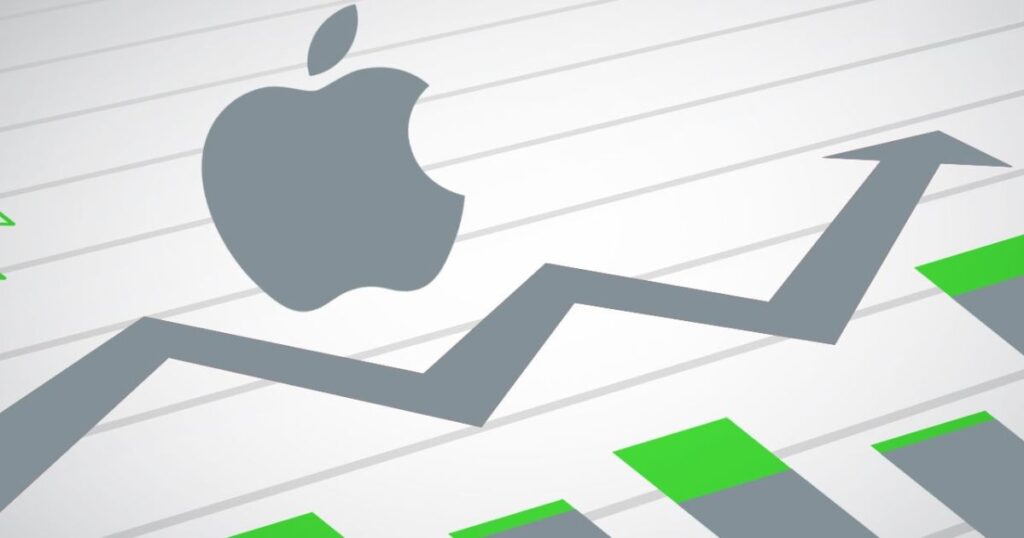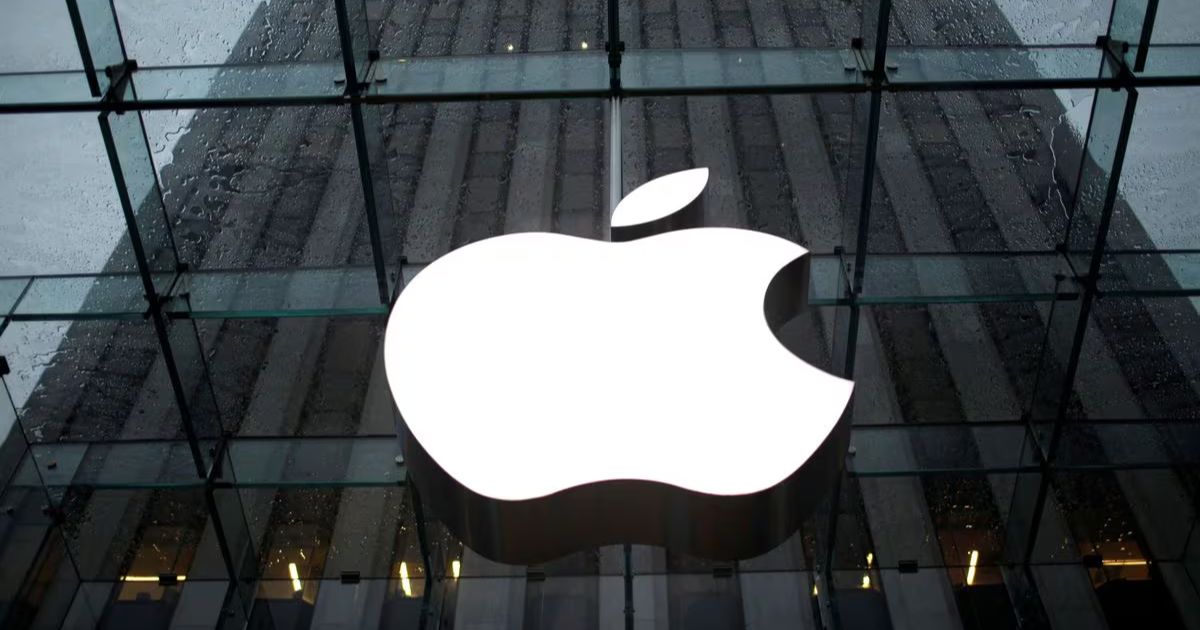FintechZoom, a popular financial news website, often reports on Apple stock, providing updates and analysis for investors. They track the ups and downs of Apple’s share price, offering insights into what might be influencing the stock’s performance. This could include new product launches, quarterly earnings reports, or broader market trends affecting the tech industry.
For many investors, keeping an eye on Apple stock through platforms like FintechZoom is important. Apple is one of the world’s most valuable companies, and its stock performance can have a big impact on the overall stock market. FintechZoom’s coverage helps both experienced investors and newcomers understand what’s happening with Apple’s shares and what it might mean for their investment decisions.
What is Apple Stock?

Apple stock represents a small piece of ownership in Apple Inc., the famous technology company that makes iPhones, iPads, and Mac computers. When you buy Apple stock, you’re essentially buying a tiny part of the company. The value of this stock can go up or down depending on how well Apple is doing as a business and what investors think about its future.
People buy Apple stock hoping it will increase in value over time, allowing them to sell it for a profit later. The stock’s price is affected by many things, like new product releases, how much money Apple is making, and general economic conditions. Owning Apple stock also means you might receive dividends, which are small payments the company sometimes gives to its shareholders as a way of sharing its profits.
History Of Apple Stock
Apple’s stock story began on December 12, 1980. That’s when the company first offered its shares to the public, a process called an Initial Public Offering (IPO). At that time, you could buy one share of Apple for $22. This was an exciting moment for the young company founded by Steve Jobs and Steve Wozniak just four years earlier.
In the 1980s, Apple’s stock saw both good and bad times. The release of the Macintosh computer in 1984 caused excitement, but leadership struggles and tough competition led to ups and downs in the stock price.
The Difficult 1990s: The 1990s were challenging for Apple. The company struggled to innovate, and its stock price reflected this. By 1997, Apple was in trouble, and its stock had fallen to around $3 per share (adjusted for later splits). Things looked bleak, but a big change was coming.
The Return of Steve Jobs: In 1997, Steve Jobs returned to Apple as interim CEO. This marked the beginning of a turnaround. Jobs streamlined the product line and struck a deal with Microsoft. The stock began to recover, showing investors’ renewed faith in the company.
The iPod Revolution: In 2001, Apple launched the iPod. This small music player would change everything. As iPod sales soared, so did Apple’s stock price. By 2006, the stock had climbed to over $80 (pre-split).
The iPhone Era: The real game-changer came in 2007 with the iPhone. This revolutionary product transformed Apple from a computer company into a mobile device powerhouse. The stock price began a steep climb, reflecting Apple’s growing dominance in the tech world.
iPad and Beyond: The iPad’s launch in 2010 continued Apple’s winning streak. By 2011, Apple had become the world’s most valuable company, surpassing oil giant ExxonMobil.
Stock Splits: To keep its stock price accessible to more investors, Apple has split its stock several times:
- 2-for-1 split in 1987
- 2-for-1 split in 2000
- 2-for-1 split in 2005
- 7-for-1 split in 2014
- 4-for-1 split in 2020
Each split multiplied the number of shares while dividing the price, making the stock more affordable without changing the company’s overall value.
Reaching New Heights: Despite occasional dips due to market conditions or temporary setbacks, Apple’s stock has generally continued to rise. In August 2018, Apple became the first U.S. company to reach a $1 trillion market cap. Just two years later, in August 2020, it hit $2 trillion.
Recent Years: Even facing challenges like the COVID-19 pandemic, trade tensions, and chip shortages, Apple’s stock has shown resilience. The company’s expansion into services like Apple TV+ and Apple Fitness+ has helped diversify its revenue streams, appealing to investors.
Apple stock remains a favorite among both individual and institutional investors. Its journey from a $22 IPO price to becoming one of the world’s most valuable companies is a testament to the power of innovation and strong leadership in driving stock performance.
Also Read: FintechZoom Disney Stock Detail
Benefits of Investing in FintechZoom Apple Stock

Strong Market Position: Apple is a leading tech company known for its innovative products like iPhones, iPads, and Macs. Investing in FintechZoom Apple Stock gives you a share in this well-established company, which has a solid market position and a strong brand reputation.
Consistent Growth: Apple has a track record of steady revenue and profit growth. This consistent performance can offer investors reliable returns over time. With FintechZoom Apple Stock, you can benefit from Apple’s ability to adapt to market trends and maintain growth.
Diverse Product Range: Apple’s diverse range of products and services, including hardware, software, and digital content, helps spread risk. Investing in Apple means you’re part of a company that is not dependent on a single revenue source, which can make it a more stable investment.
Innovation and R&D: Apple invests heavily in research and development, driving future growth and technological advancement. By owning FintechZoom Apple Stock, you’re investing in a company that is constantly working on new technologies and innovations, potentially leading to increased stock value.
Global Presence: Apple operates worldwide, which helps it reach a broad customer base. This global presence means the company can benefit from various international markets. Investing in FintechZoom Apple Stock allows you to be part of a company with significant global reach.
Strong Financial Health: Apple has a robust balance sheet with high cash reserves and low debt. This financial strength provides stability and the ability to weather economic downturns. Investing in FintechZoom Apple Stock can give you confidence in the company’s financial stability.
Risks Associated with FintechZoom Apple Stock Coverage
- Incomplete information: FintechZoom may not provide comprehensive coverage of all factors affecting Apple stock, potentially leading to gaps in investor knowledge.
- Potential bias: As with any financial media outlet, FintechZoom’s coverage may be influenced by various factors, including editorial stance or market sentiment.
- Market volatility: The rapid pace of stock market changes may outpace FintechZoom’s reporting, resulting in potentially outdated information.
- No guaranteed outcomes: Positive coverage on FintechZoom does not ensure stock appreciation. Market forces are complex and multifaceted.
- Herd behavior risk: Widespread reliance on a single information source like FintechZoom could lead to coordinated market movements, potentially amplifying volatility.
- Oversimplification of complex issues: In an effort to increase accessibility, FintechZoom may oversimplify nuanced financial concepts, leading to incomplete understanding.
- Lack of personalization: FintechZoom provides generalized information that may not align with individual investor needs, risk tolerances, or financial goals.
- Risk of information overload: Easy access to frequent updates may encourage excessive monitoring, potentially leading to stress or impulsive decision-making.
- False sense of expertise: Regular consumption of financial news may create an illusion of expertise, potentially leading to overconfidence in investment decisions.
- Narrow focus: Concentration on Apple stock may lead to neglect of broader market trends or macroeconomic factors that could impact investment outcomes.
Conclusion
FintechZoom’s Apple stock coverage can be a handy tool for investors, both newbies and pros. It breaks down complex info into bite-sized pieces, making it easier to keep up with what’s happening with Apple in the stock market. This can help you make more informed choices about buying, selling, or holding onto Apple shares. Plus, it’s free and saves you time from hunting down info all over the place.
But remember, it’s not perfect. FintechZoom might miss some important details, and the stock market changes super fast. It’s smart to use other sources too and not put all your eggs in one basket. At the end of the day, investing always comes with risks, and it’s up to you to decide what’s best for your money. FintechZoom can be a good starting point, but it shouldn’t be your only guide in the tricky world of stocks.
FAQ’s
Is FintechZoom enough for making Apple Stock investment decisions?
While helpful, FintechZoom shouldn’t be your only resource. It’s wise to consult multiple sources and possibly a financial advisor before investing.
Is FintechZoom Apple Stock info reliable?
FintechZoom generally provides reliable info, but it’s not perfect. It’s best to use it alongside other trusted sources for a fuller picture.
How often does FintechZoom update its Apple Stock info?
FintechZoom typically updates frequently, often daily. However, the stock market moves even faster, so some info may be slightly behind real-time changes.
Do I need to pay to access FintechZoom’s Apple Stock coverage?
Basic Apple stock info on FintechZoom is usually free. Some more detailed features or analysis might require a paid subscription.
Can FintechZoom predict if Apple Stock will go up or down?
FintechZoom provides analysis but can’t predict the future with certainty. Stock movements depend on many factors, some unpredictable.


